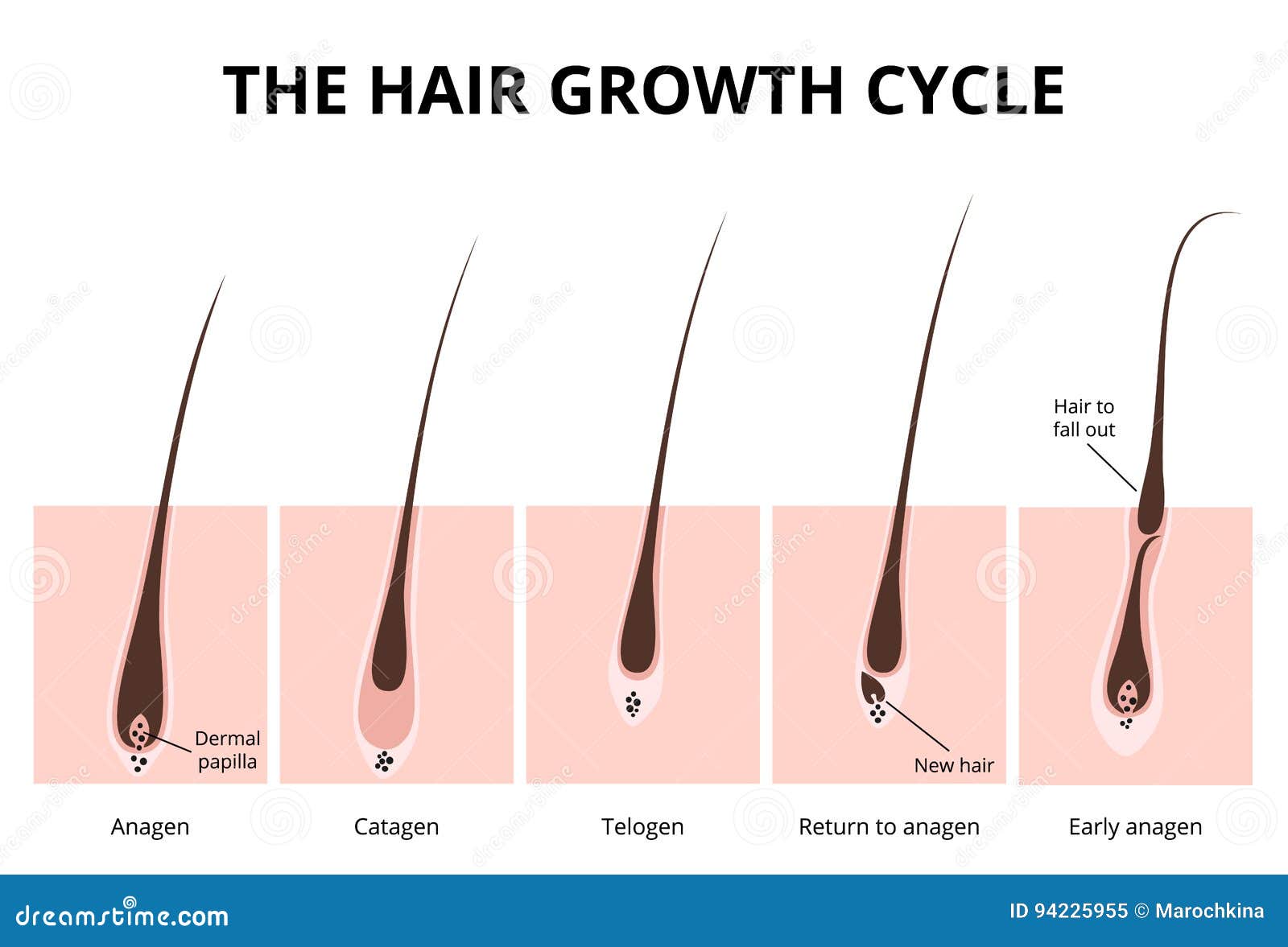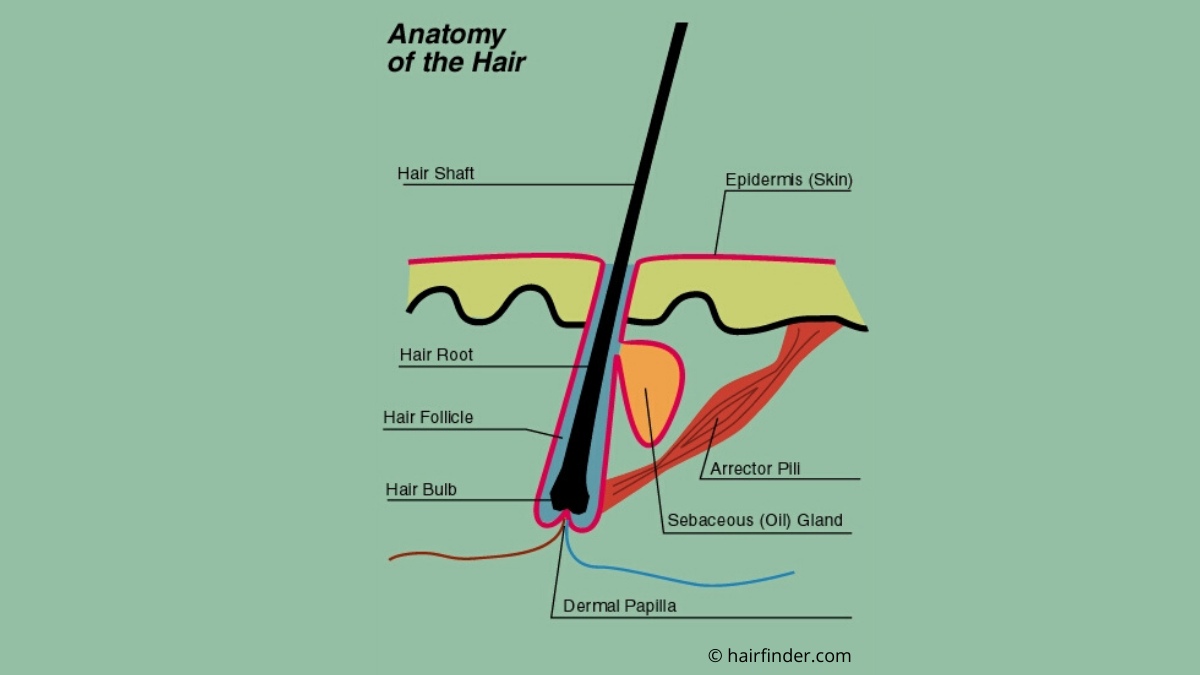Table Of Content

The top of the cylinder is an open hole, which is where your hair grows out. Your follicle is similar to a sock; your hair is your foot that goes into your sock. The follicle is the primary structure from which hair can grow. The histological arrangement of the follicle is divided into outer and inner root sheaths.
The Biology, Structure, and Function of Hair
Thick hair such as that of the lion's mane and grizzly bear's fur do offer some protection from physical damages such as bites and scratches. Hair is present on almost the entire surface of our body, excluding certain regions such as the palms of our hands, soles of our feet, and some genital areas. In certain places, hair is so small that it is virtually invisible to the naked eye and in other places it is quite obvious, like on our head and in our armpits. The unwanted loss of hair, known as alopecia, is a widespread condition affecting both sexes, occurring in numerous patterns, and classified into non-scarring and scarring (cicatricial) subtypes. Some people have curly corkscrew hair, while others have thick, straight, shiny hair.
Grey’s Anatomy star looks unrecognisable as he shows off new blonde hair transformation – can you tell who... - The US Sun
Grey’s Anatomy star looks unrecognisable as he shows off new blonde hair transformation – can you tell who....
Posted: Sat, 10 Sep 2022 07:00:00 GMT [source]
Microanatomy of Anagen Phase Hair
The column eventually reduces to a nipple and forms secondary hair germ below the club. The club hair itself is formed from cortical and cuticle cells only, and it is characterized by a lack of pigmentation [2, 37]. The presence of hairless gene mutation contributes to the failure of dermal papilla migration toward the bulge area in catagen phase [3]. FGF5 is a key inducer of catagen and FGF5-deficient mice have a prolonged anagen phase. In addition to FGF5, TGF-β1, IL-1b, the neurotrophins NT-3, NT-4 and BMP2/4 and TNF-α have been described to induce catagen [36].
2. Structure of the hair
After these first two cycles, hair starts to grow in an asynchronous “mosaic” pattern rather than in waves [2]. Thereafter, the epithelial placode expands and generates the primary hair germ (stage 2). The second signal arises from epithelial placode and constitutes a cluster of adjacent mesenchymal cells which later develops the dermal papilla (DP). The ultimate signal from this primitive dermal papilla to the epithelial placode cells indicates a rapid proliferation and differentiation. This consecutive signaling process finally leads to the production of the mature follicle.
What tests check the health of my hair follicles?
Most chemical hair removers also act superficially; however, electrolysis and yanking both attempt to destroy the hair bulb so hair cannot grow. Through the anagen I–V, hair stem cells proliferate, encloses the dermal papilla, grow downwards to the skin and begin to proliferate hair shaft and IRS, respectively. Subsequently, hair matrix melanocytes begin to develop pigment and the form of the hair shaft begins to arise; in anagen VI, hair bulb and adjacent the dermal papilla formation is realized and the new hair shaft appears from the skin.
Microanatomy of Catagen Phase Hair
If you have any concerns about your hair growth, talk to a dermatologist. A 2017 article found a new method of reactivating dead or damaged hair follicles. However, this treatment hasn’t yet been tested on humans and it hasn’t been approved by the Food and Drug Administration (FDA). Hair follicles aren’t just responsible for how much your hair grows, they also influence what your hair looks like. Circular follicles produce straight hair while oval follicles produce curlier hair.
This research was funded by the Natural Sciences and Engineering Research Council of Canada (NSERC), the National Research Council Canada (NRC), the Canada Foundation for Innovation (CFI) and the Ontario Ministry of Economic Development and Innovation. MCR is the recipient of an Early Researcher Award of the Province of Ontario. The funders had no role in study design, data collection and analysis, decision to publish, or preparation of the manuscript. The specimen of most individuals showed 3 distinct reflections at ∼90 Å, 46.5 Å and 27 Å, related to the properties of intermediate keratin filaments (B). Integration of the 2-dimensional data was performed using Matlab, MathWorks. By adding up the peak intensities along the qz and the q‖ directions, 1-dimensional data along each of the two directions were produced.

Cast, characters, and appearance period
On adult whales, elephants, sirenians, and rhinoceroses body hair is limited to scattered bristles. In most other mammals the hair is abundant enough to form a thick coat, while humans are among the most hairless of all mammals. Nerve supply to the hair follicles is similar to that of the surrounding network of dermal nerves in that it is composed of both sensory afferents and autonomic sympathetic nerves. Sensory information from hair stimulation enhances tactile ability. Autonomic nervous innervation primarily provides control of the arrector pili muscle.
Human hairlessness
During the hair cycle phases, there are some alterations in the density of perifollicular vascularization due to the upregulation of vascular endothelial growth factor expression [1]. The hair follicle serves as a reservoir for epithelial and melanocyte stem cells and it is capable of being one of the few immune privileged sites of human body. Hair follicle development is related to the interactions between epithelial and mesenchymal cells. Many genes play substantial role in this interaction and also in hair follicle cycling [3–5].
These include the face, ears, head, eyebrows, legs, and armpits, as well as the pubic region. The highly visible differences between male and female body and facial hair are a notable secondary sex characteristic. Jablonski's assertions[52] suggest that the adjective "woolly" in reference to Afro-hair is a misnomer in connoting the high heat insulation derivable from the true wool of sheep. Further, wet Afro-hair does not stick to the neck and scalp unless totally drenched and instead tends to retain its basic springy puffiness because it less easily responds to moisture and sweat than straight hair does.
Different follicles go through different phases of the cycle at the same time. Some follicles are in the growth phase while others might be in the resting phase. Some of your hairs might be growing, while others are falling out. According to a 2015 article, recent research has suggested that hair follicles aren’t just “resting”’ during the telogen phase.

No comments:
Post a Comment